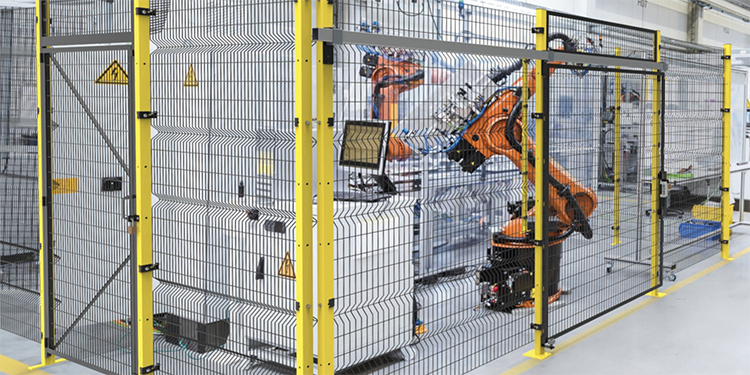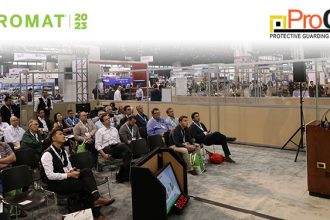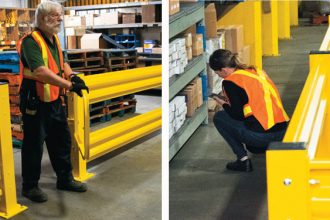Not Using Protective Guarding Around Equipment And Machinery? It’ll Cost You

The Occupational Health and Safety Administration (OSHA) makes it abundantly clear in Regulation 29 CFR 1910.212 that machine guarding (protective guarding) must be installed to protect operators and other employees in the area from hazards associated with equipment. This includes machinery, automation, and robotic systems. Yet, despite those regulations, machine guarding has been a Top 10 OSHA violation for the past two decades.
Because moving equipment parts, sharp edges, hot surfaces, flying chips, and sparks can all cause serious worker injuries—such as crushed fingers or hands, amputations, burns, or blindness—guarding on or around the perimeter of the equipment is essential to safeguard employees. Indeed, any machine part, function, or process that might cause injury should be guarded.
National Safety Council Data
Not only does protective guarding prevent workers from experiencing injuries, but it also can positively impact the bottom line. According to the National Safety Council (NSC), the total cost of work injuries in 2020 was $163.9 billion. That breaks out to:
- $44.8 billion in wage and productivity losses.
- $34.9 billion in medical expenses.
- $61.0 billion in administrative expenses.
- $12.8 billion in employers’ uninsured costs associated with the dollar value of time lost by uninjured workers. This refers to time spent investigating and reporting injuries and administering first aid. It also includes hiring and training replacement workers and the extra cost of overtime for uninjured workers.
- $10.4 billion in other costs, including damage to equipment and vehicles.
Further, in 2020 an injury serious enough to require a consultation with a medical professional had an average cost of $44,000. Fatalities on the job cost $1,310,000 on average in 2020. The NSC bases these figures on estimates of wage losses, medical expenses, administrative expenses, and employer costs.
As a result of on-the-job injuries in 2020, NSC estimates a loss of 65,000,000 workdays. While that approximation includes the actual time lost during the year from disabling injuries, it excludes time lost on the day of the injury. It also excludes any time required for further medical treatment or check-ups following the injured person’s return to work.
Direct and Indirect Costs of an Accident
Ultimately, the total cost of an accident ranges from four to ten times the direct costs. Direct costs include out-of-pocket expenses like hospital and medical bills and loss of worker time. They also include lost productivity due to the machine involved in the accident being idled, shut down, or in need of repairs. They can also include other machine shutdowns, plus overtime and hiring expenses. Indirect costs—which vastly exceed direct costs—include OSHA fines, loss of business, and increased insurance premiums. Additionally, there are administrative costs, negative publicity, reputation damage, decreased employee morale, lower productivity, legal fees, and employee training expenses.
When considering all the direct and indirect costs associated with injuries caused by insufficient or missing protective guarding, installing and regularly verifying the proper function of barriers and other safety shields and devices should be considered necessary and an easy decision to implement. Safety guards control access to the equipment. They also prevent unauthorized personnel from contacting it, and shut the machinery down if there is a guarding breach.
Not only does the installation of protective guarding and other safety systems significantly reduce the risk of employee injuries, but 95% of executives say it has a positive impact on financial performance according to a poll conducted by Liberty Mutual Insurance. Likewise, OSHA estimates that for every dollar spent on safety, six dollars is saved—a 600% return on investment (ROI).
Wondering if your equipment is adequately guarded to protect your employees from injuries and avoid OSHA violations? The members of the Protective Guarding Manufacturers Association (ProGMA) are available to discuss and evaluate multiple areas within a facility where different types of guarding systems should be used.



